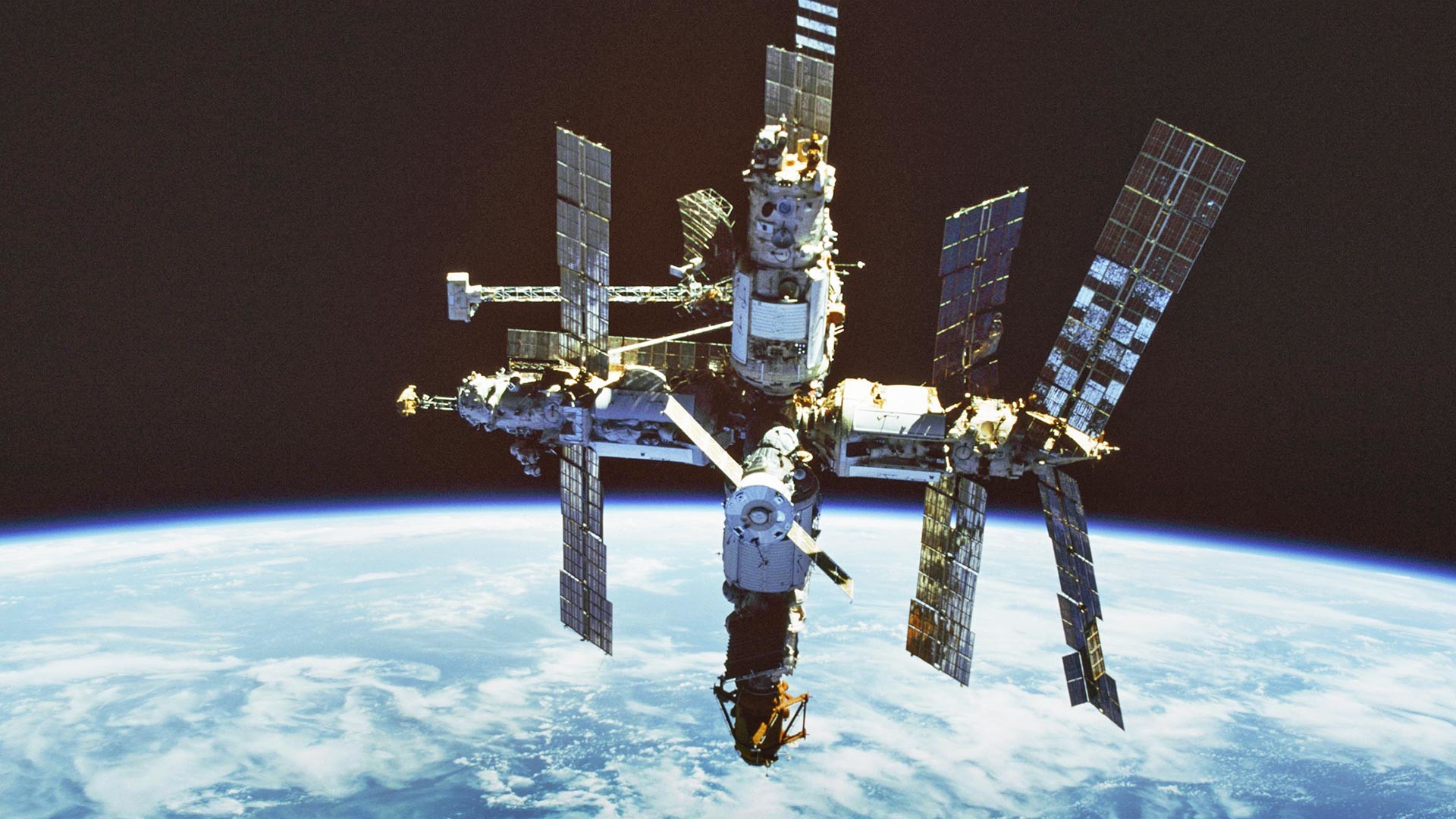
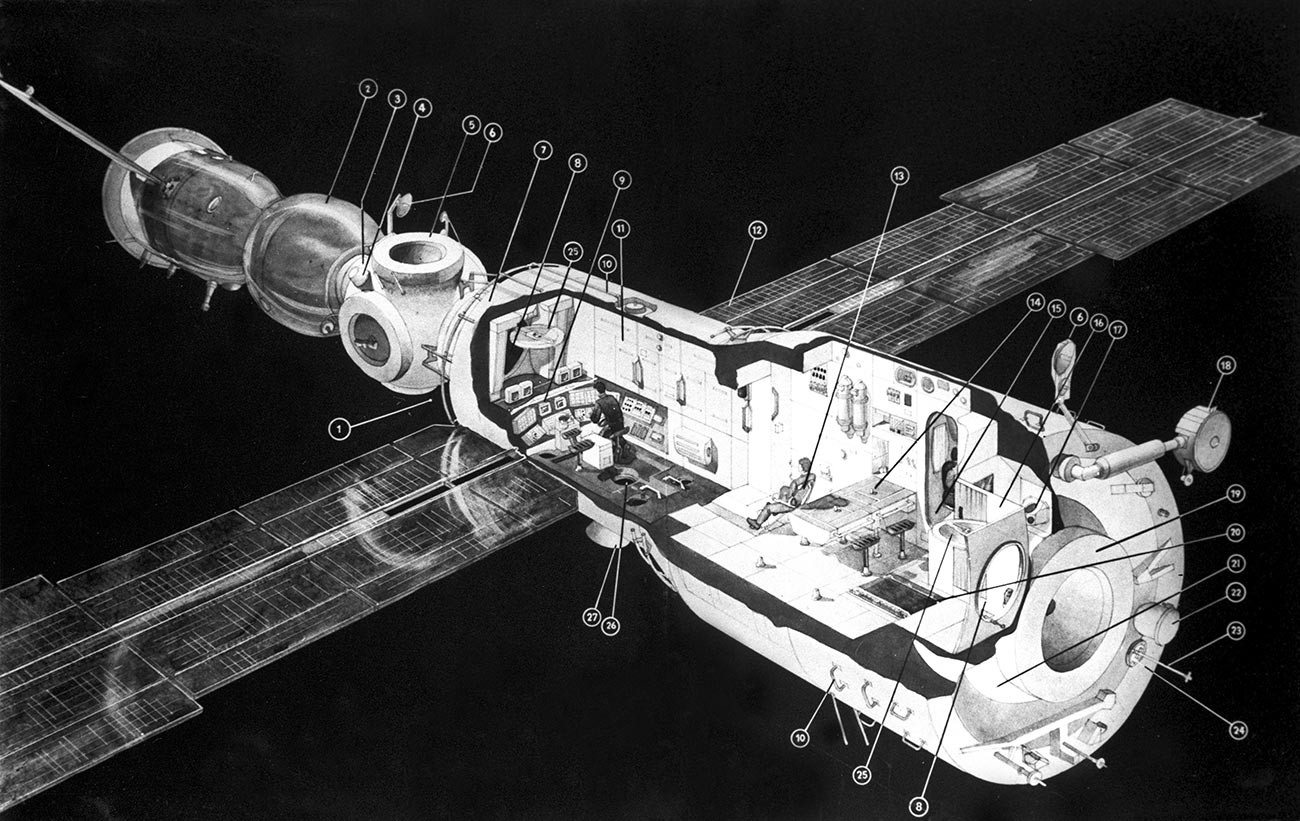
The Mir station plan.
SputnikWhen the USSR launched the Mir space station into orbit in 1986, it became the first manned modular station. For a long time, Mir was the only platform to test and prepare for prolonged periods of work in space. Since then, it was frequented by many astronauts from various countries. Lessons learned throughout the years helped to enhance the International Space Station, among other things.
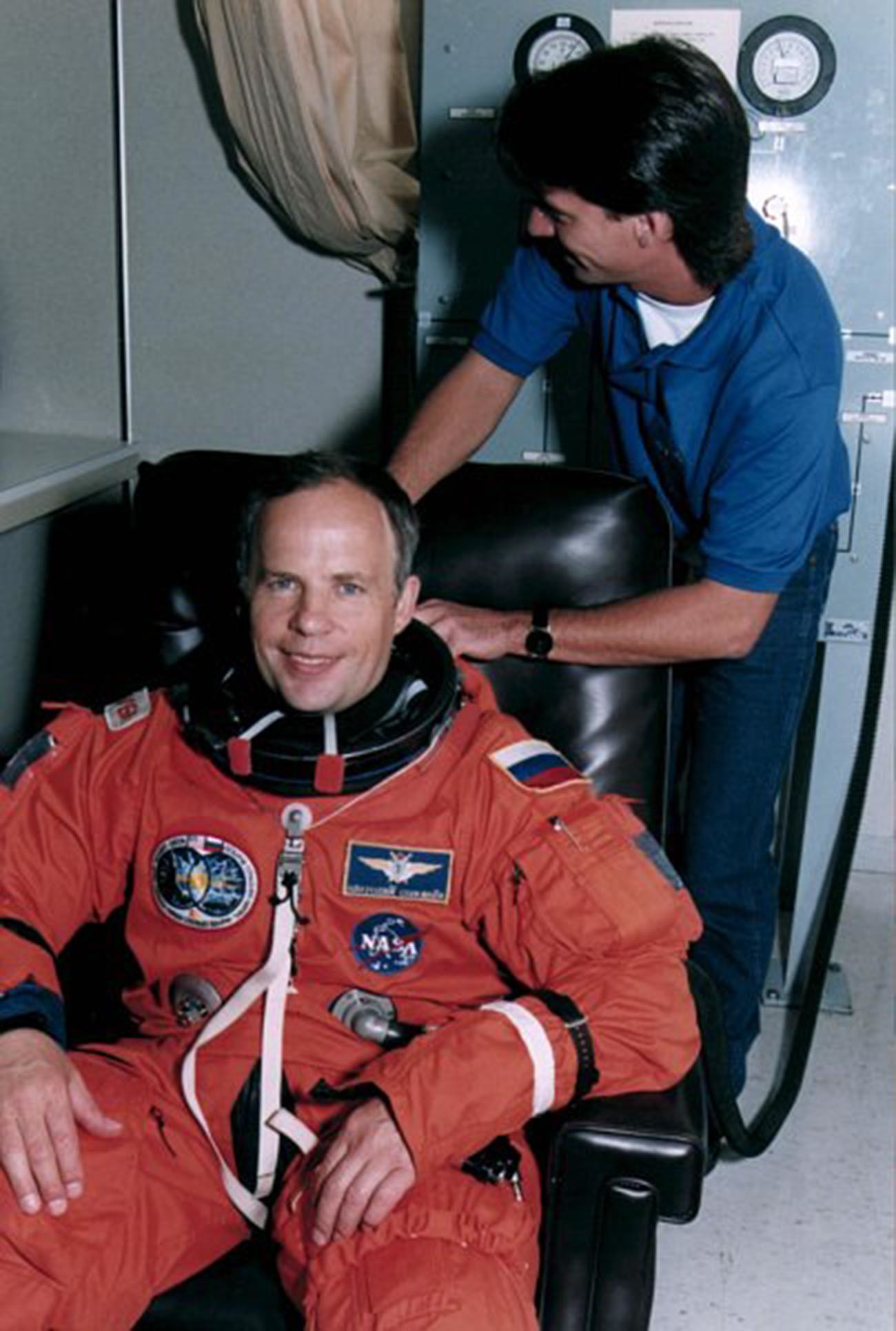
MIR 19 Mission Commander Anatoly Y. Solovyev.
NASAThe station was specifically used for hosting prolonged space missions. Not surprisingly, two world records concerning the longest period in space, among men and women, were set on the Mir station by Russian cosmonaut Valeri Polyakov and American astronaut Shannon Lucid, respectively.
Russian cosmonaut Anatoly Solovyev holds the world record for the number of spacewalks, 16 in total, and on accumulated time of spacewalking - 82 hours - all performed while aboard the Mir space station.
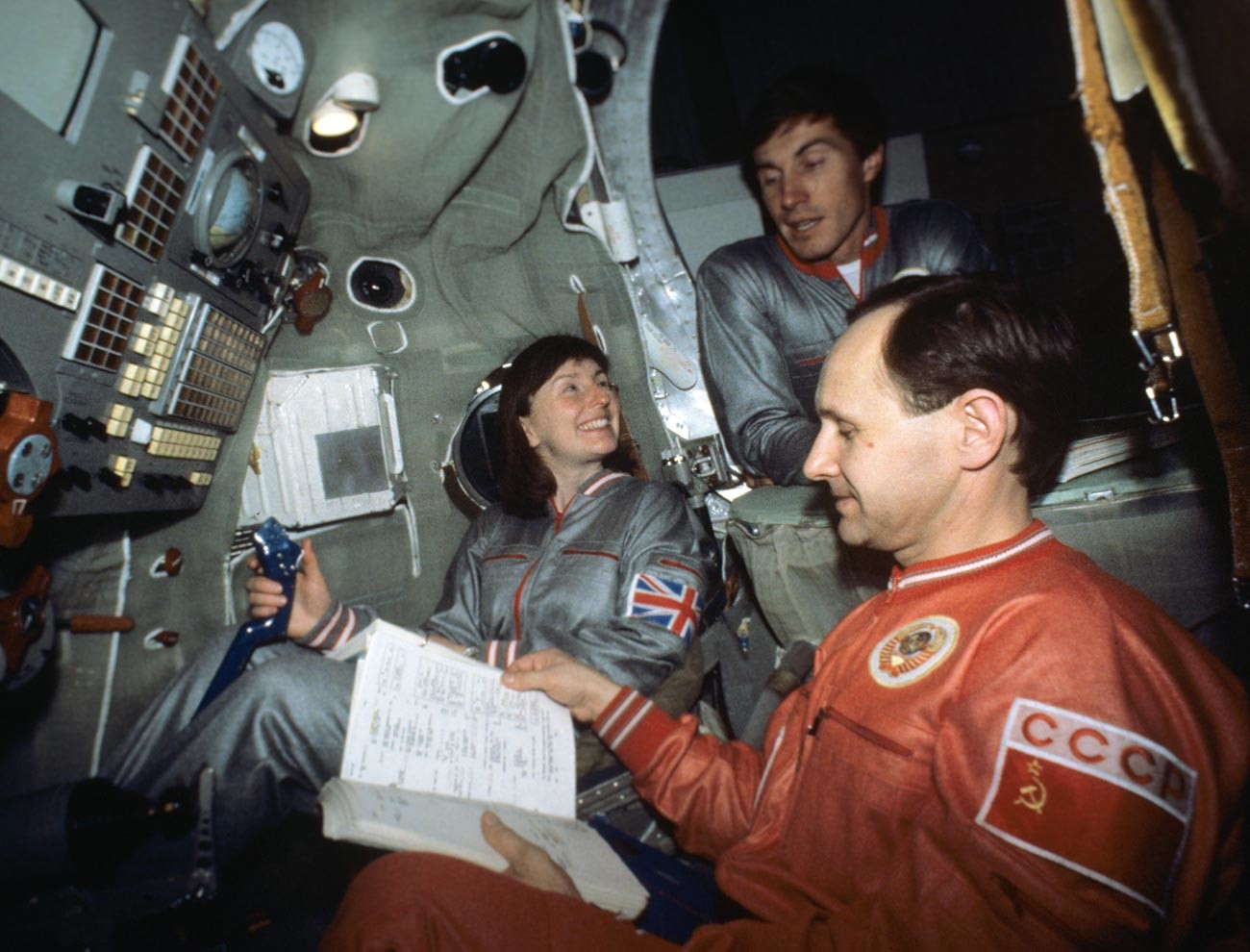
The Soviet-British space crew: Helen Sharman, Sergey Krikalev and Anatoly Artsebarsky.
Alexander Mokletsov/SputnikThe first foreign crew stepped on board the Russian Mir station in 1995. Since then, astronauts from the U.S., Canada, the UK, Austria, Germany, France, Japan, Slovakia, Bulgaria, Syria and even Afghanistan visited the space station, turning it into a symbol of solidarity in the name of science.
The station also hosted the banner of peace, a symbol of the Roerich Pact, dedicated to the protection of artistic and scientific institutions and historical monuments, onboard from February to August 1990.
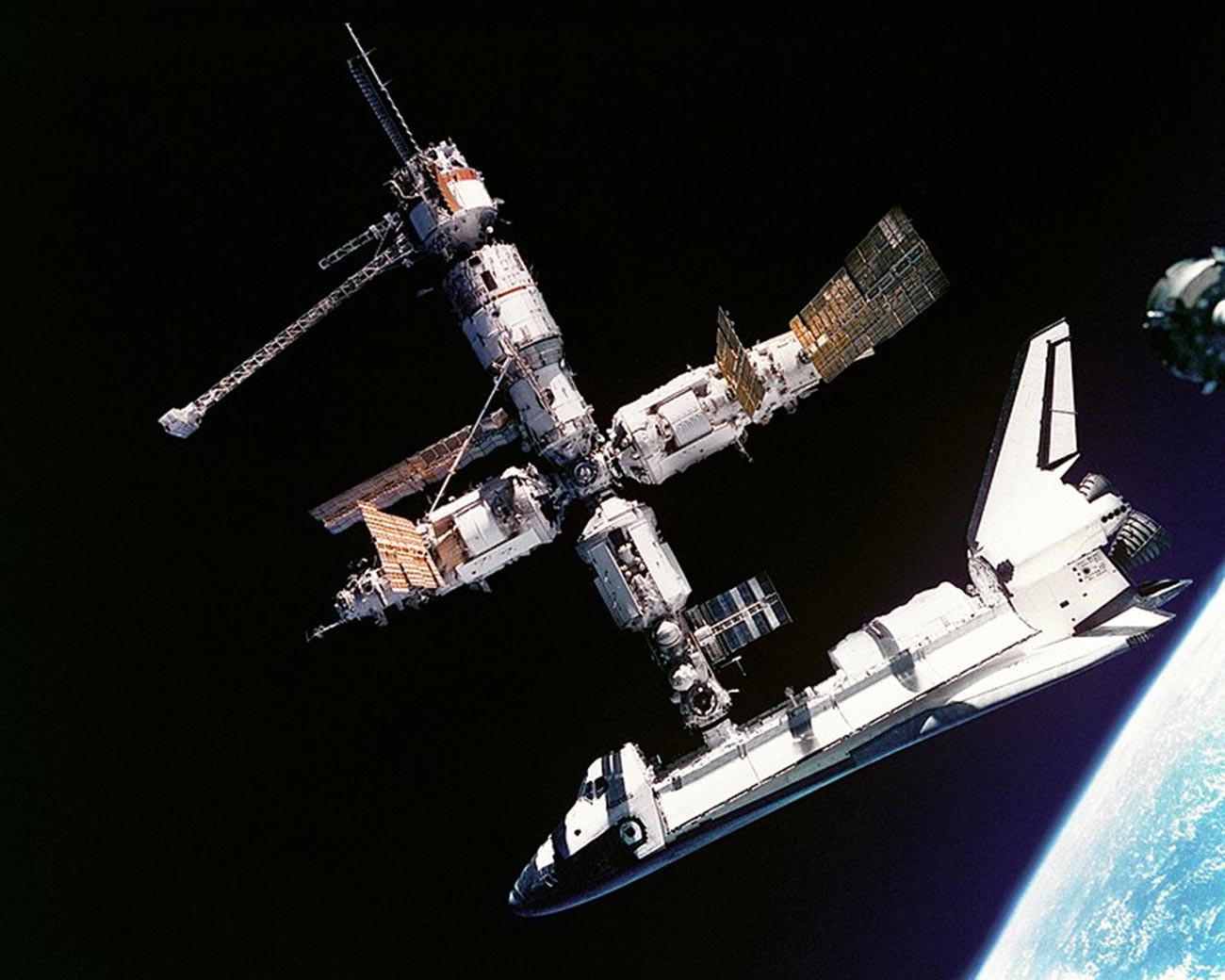
This view of the Space Shuttle Atlantis still connected to Russia's Mir Space Station was photographed by the Mir-19 crew on July 4, 1995.
NASAThe Mir-Shuttle program that started in 1993 was a collaborative program between space agencies of the U.S. and Russia. For four years, Russian cosmonauts used American-made Shuttles to reach the Mir station and American astronauts used the Soyuz spacecraft to engage in long-duration missions aboard the Mir space station. The program ended in 1998.
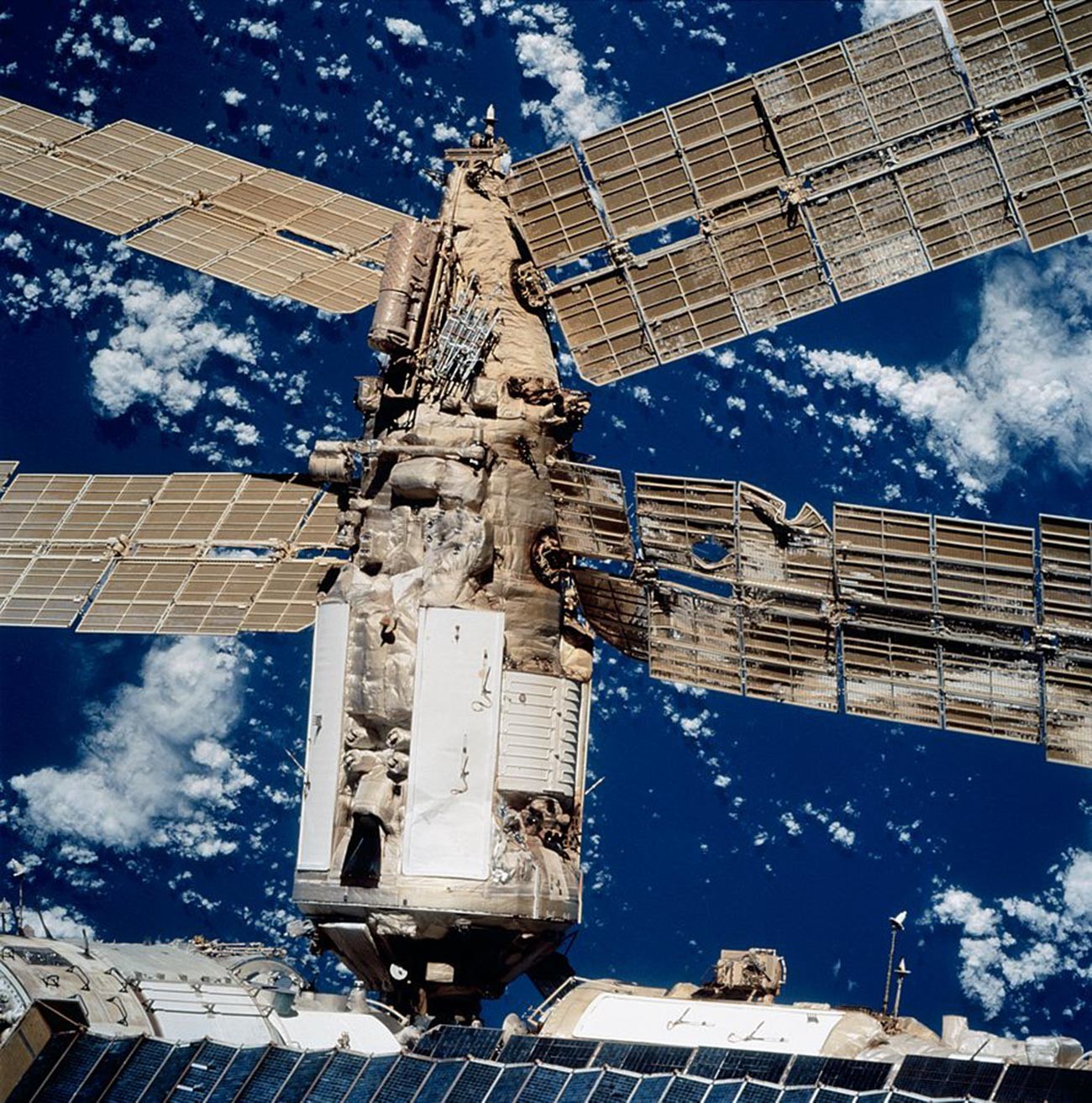
The collision damaged solar panels.
NASAThe most serious accident happened on June 25, 1997, when an error of the new control and approach system caused a collision between the Progress M-34 transport ship and the docked Spektr module of the Mir station.
The collision damaged solar panels and caused a major loss of power on the station. It proved impossible to fix the damaged module, so the cosmonauts just sealed it off. The module remained that way up until Mir was sunk into the Pacific Ocean in 2001.
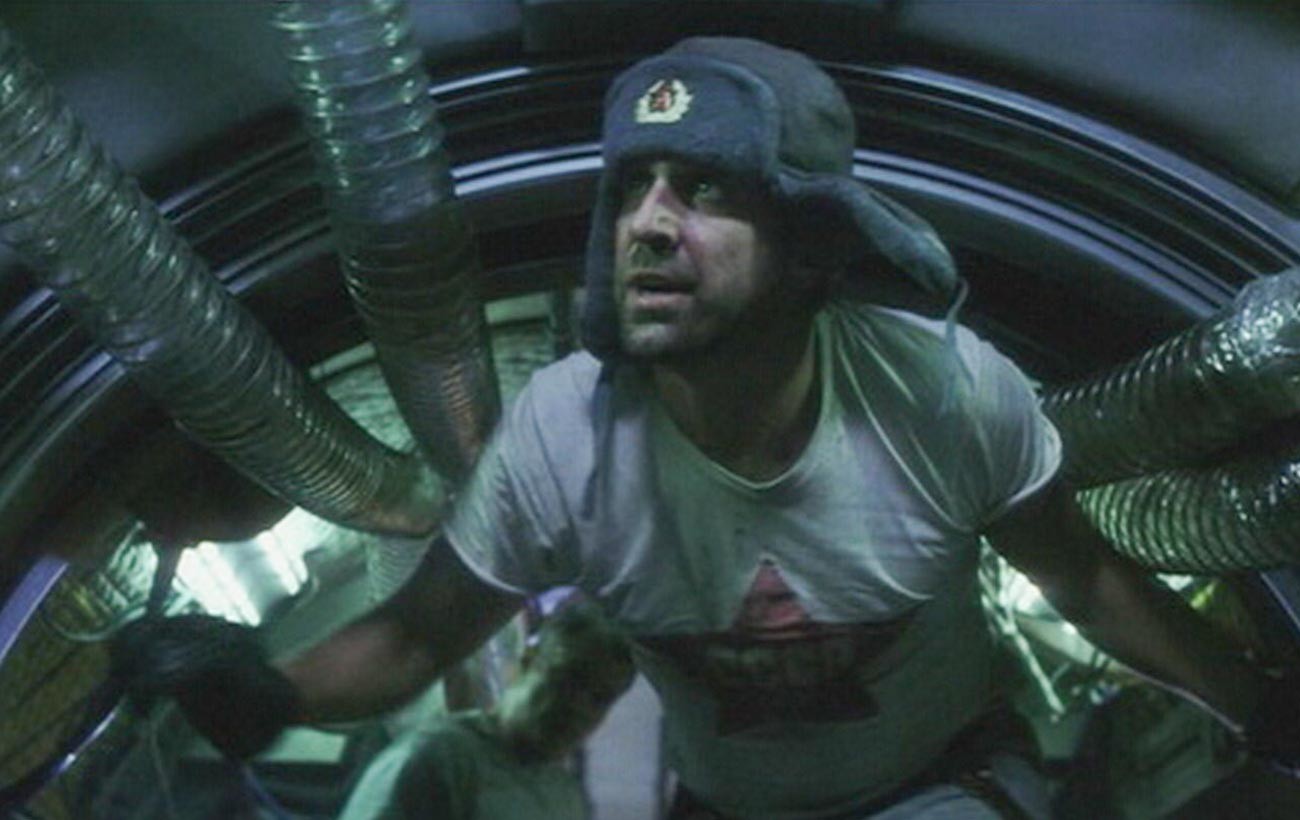
A scene from the Armageddon movie.
Michael Bay/Touchstone Pictures; Jerry Bruckheimer Films; Valhalla Motion PicturesThe Mir station appeared in popular culture a great many times. It featured in movies like ‘Armageddon’, ‘Virus’ and ‘Iron Sky’, as well as in ‘Red Alert 3’ and ‘Fallout Tactics: Brotherhood of Steel’ computer games.
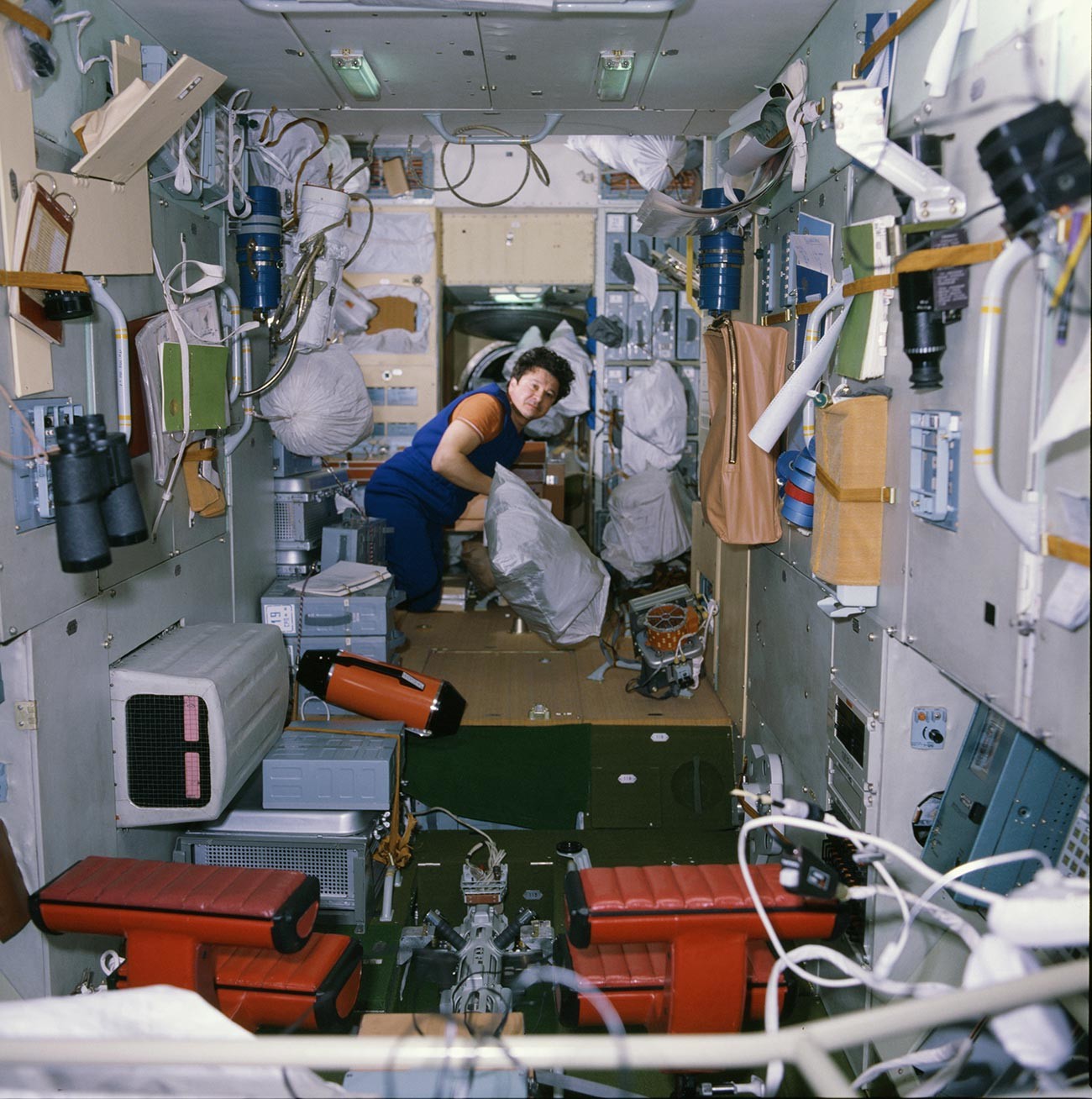
Inside the station, 1986.
In total, the first manned modular station lasted for 5,511 days in Earth’s orbit.
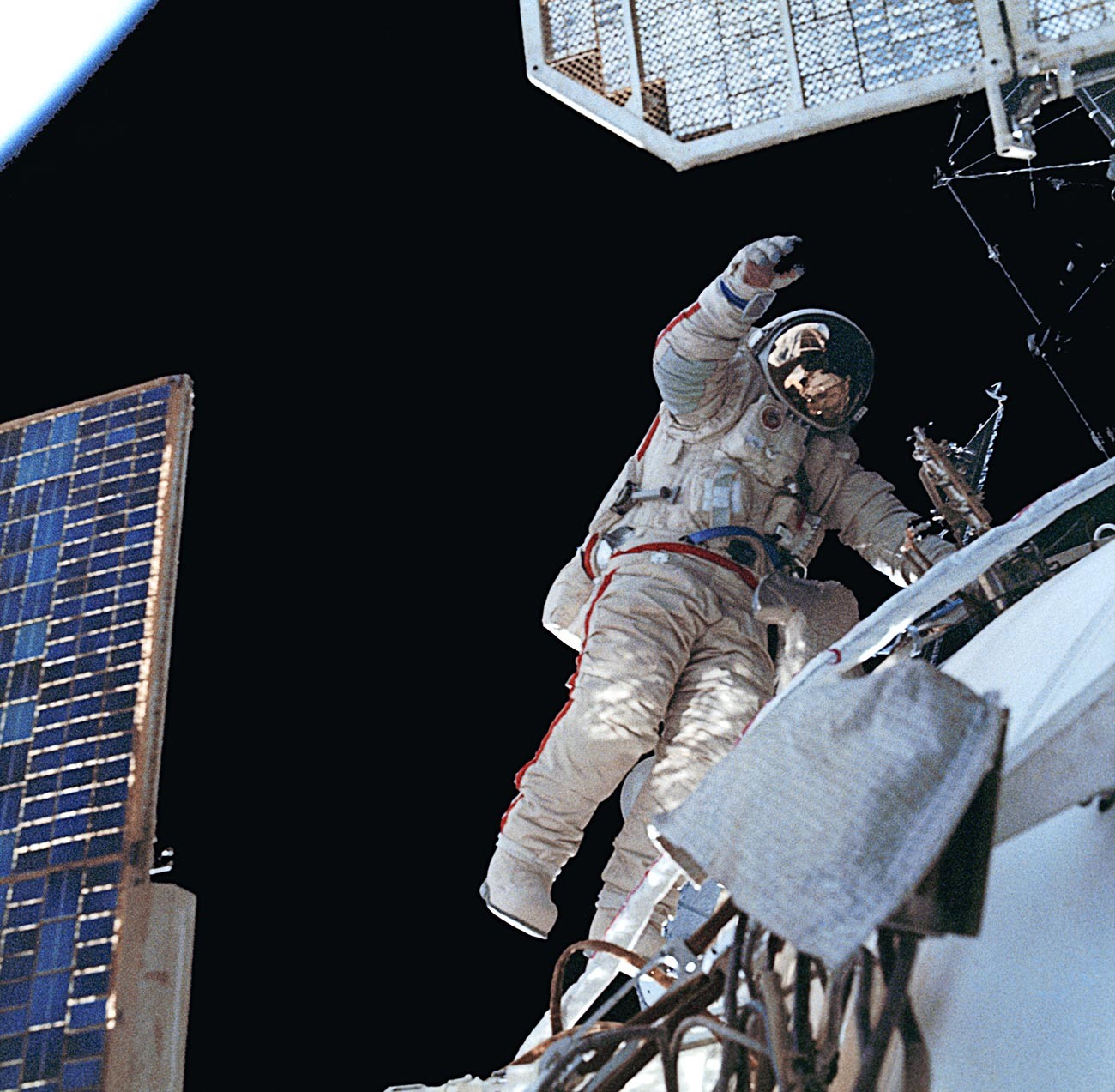
Cosmonaut Alexander Volkov during a spacewalk.
SputnikAmong other things, scientific missions to the Mir space station helped scientists to learn to predict earthquakes more accurately.
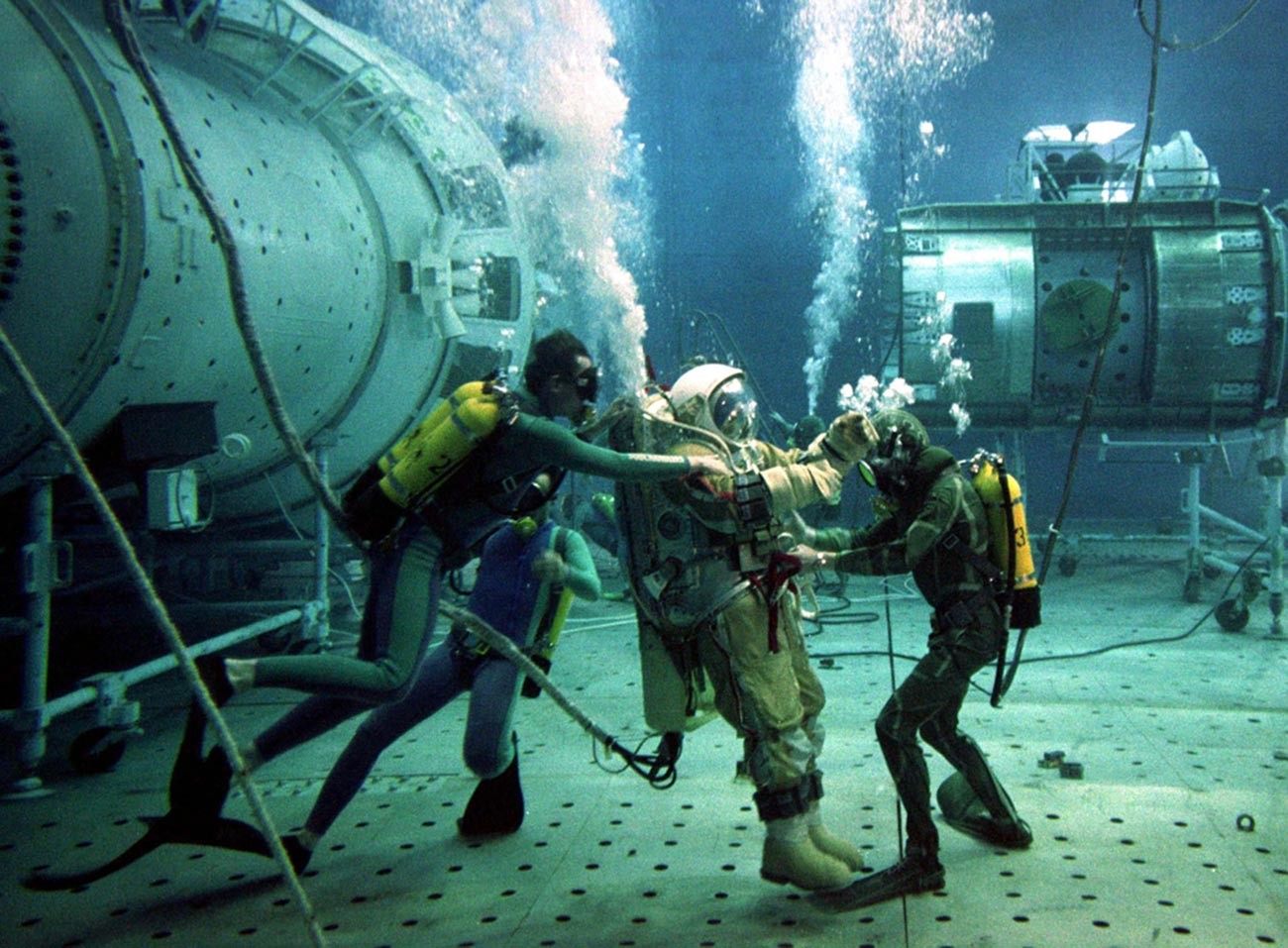
Russian test instructor Oleg Pushkar is assisted by divers during underwater tests on a replica of the damaged Mir space station July 4. 1997.
ReutersWith time, constant failures on the Mir space station indicated it had become outdated, needing major investments to sustain its operation that, by 2001, had lasted 15 years. That was also no longer feasible, so on March 23, 2001, the station was deorbited into a remote zone in the Pacific Ocean known as the ‘Spacecraft Cemetery’.
After the legendary spacecraft was buried underwater, unconfirmed rumors spread that its decommission had been provoked by a deadly virus that had come from outer space.
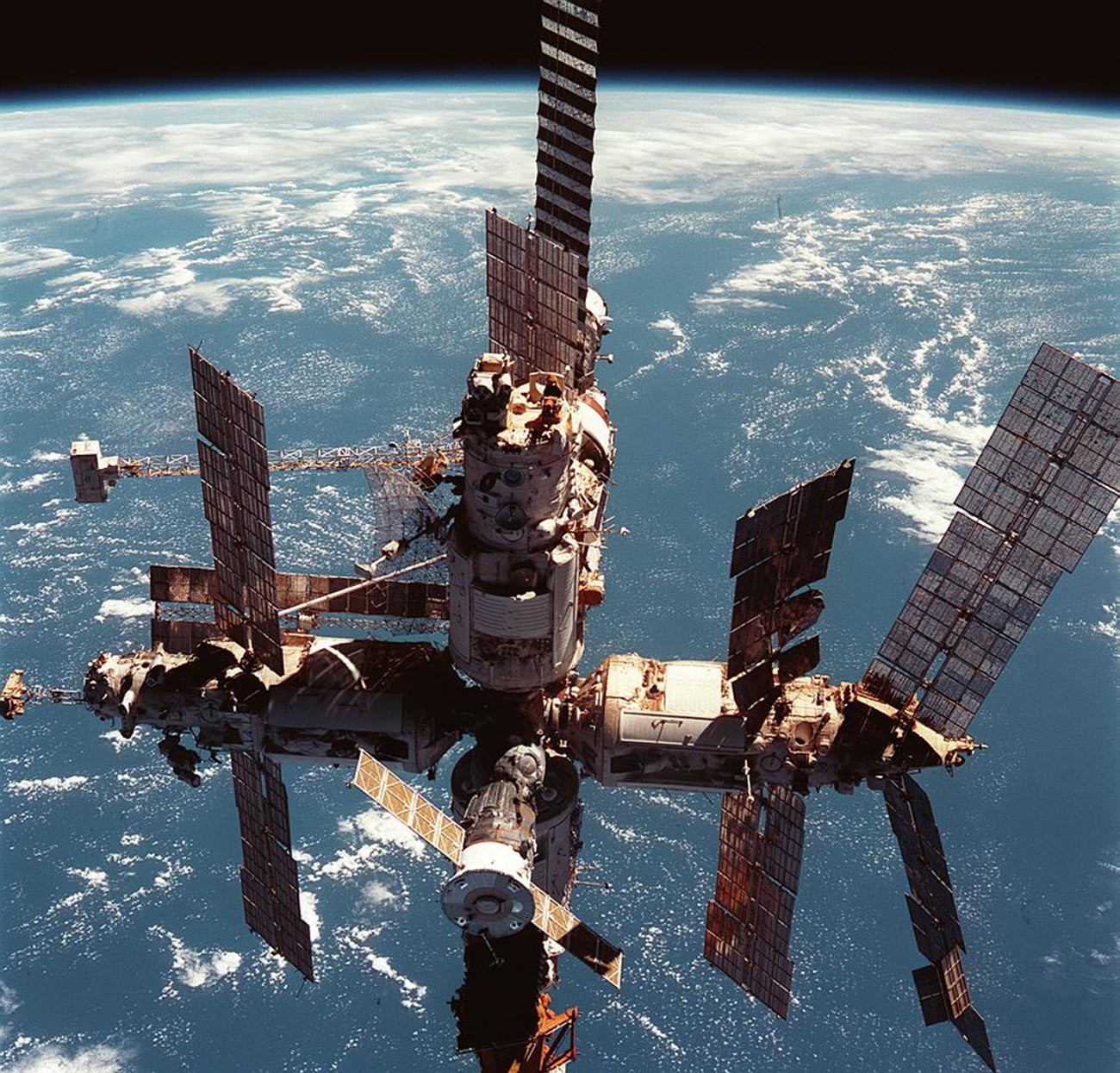
Mir on 12 June 1998.
NASAA few months after Mir’s decommission, Belgium astronomer Eric Walter Elst discovered an asteroid that was eventually given the name ‘11881 Mirstation’.
Click here to find out who the first casualty of the Soviet space program was.
If using any of Russia Beyond's content, partly or in full, always provide an active hyperlink to the original material.
Subscribe
to our newsletter!
Get the week's best stories straight to your inbox